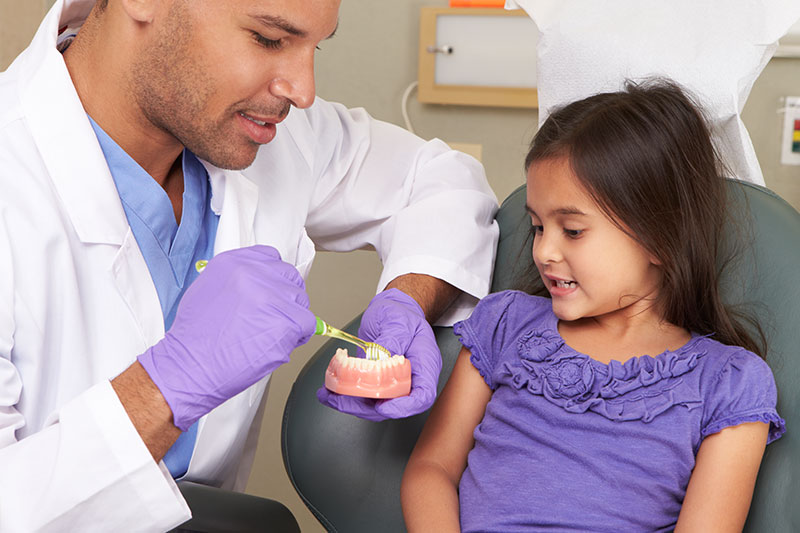White Fillings

Dental cavities are one of the most common oral issues affecting children. Once cavities develop, it’s important that you visit a pediatric dentist for treatment, even in baby (primary) teeth.
Many parents may not see the importance of repairing or saving primary teeth since they will eventually fall out. However, baby teeth should be maintained until the permanent teeth developing underneath are ready to erupt and replace them to avoid any complications. Besides holding space for the permanent teeth, primary teeth help your child to develop proper speech patterns and chew food thoroughly for good digestion.
Why choose white fillings?
There are different types of filling materials for tooth cavities, including white fillings and silver fillings. Correctly installed white fillings are the preferred option for young patients because they:
- Are less sensitive to cold and hot temperatures
- Require minimal removal of the tooth structure before placement
- Can be easily matched to the shade of adjacent natural teeth for an even smile
- Are mercury free
- Will not corrode
- Are long lasting
Unlike white fillings that are invisible and minimally invasive, silver fillings can be easily detected in the mouth, which may affect your child’s smile. They also require the removal of more of the healthy tooth for the filling to fit properly, which weakens the tooth and makes it susceptible to breaking.
What to expect
White fillings are placed in a single appointment. The tooth is numbed using a local anesthetic and surface gel, after which the dentist removes the decay using a dental drill. The treatment is pain free, and any debris and water in the mouth is removed using suction to minimize any discomfort. The dentist then fills the cavity using tooth-colored filling material.
After treatment, the numbness may last for a period of time, so you should make sure that your child doesn’t bite his/her cheeks, tongue, or lips. It’s not uncommon for patients to feel some sensitivity when biting or consuming hot/cold items for a short period of time following the procedure.
Fillings placed on permanent teeth follow the same procedure, and the treatment can last up to 20 years with proper care and oral hygiene.
Discuss ways to improve your child’s oral health
After treating a cavity, make sure to discuss preventive care with your dentist to reduce the likelihood of other incidences of tooth decay and other oral problems in the future.
Sources
https://www.ucc.ie/en/media/academic/dentalschool/patientinfoleaflets/DentalFillingsinChildrensTeeth.pdf
https://drakeandwallacedentistry.com/blog/children-white-fillings/
https://childrenssurgicalcenter.com/white-filling-vs-silver-fillings

